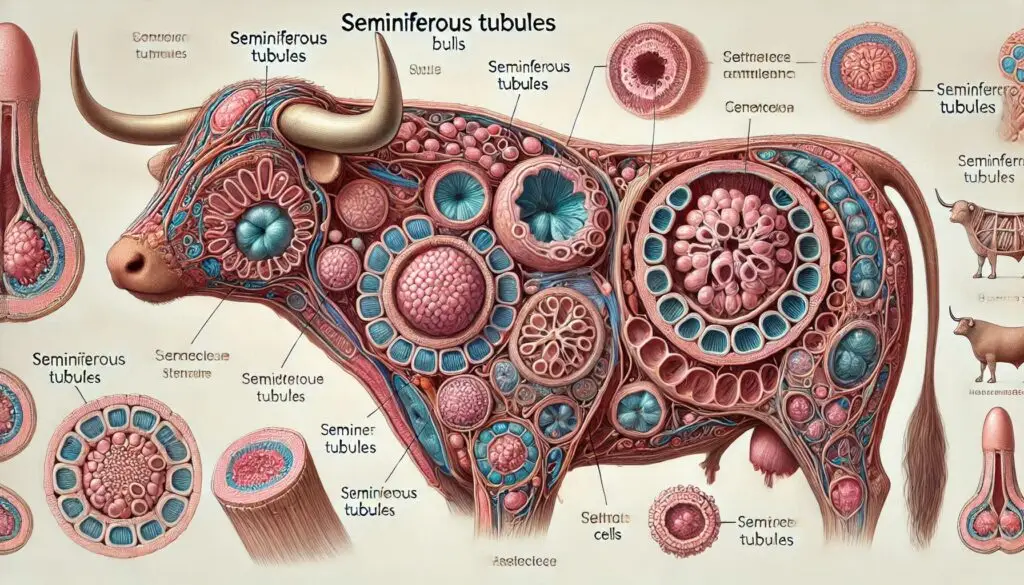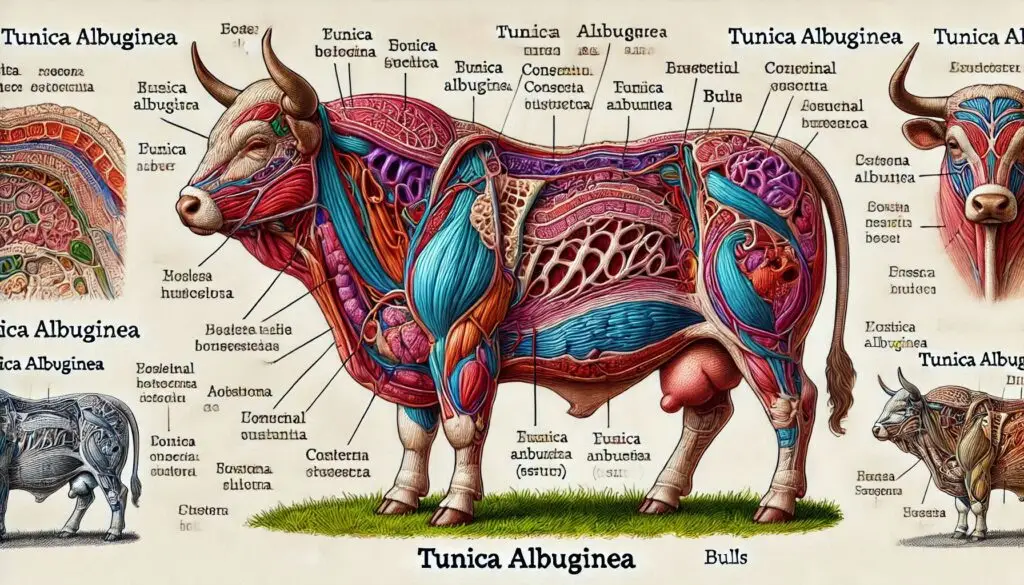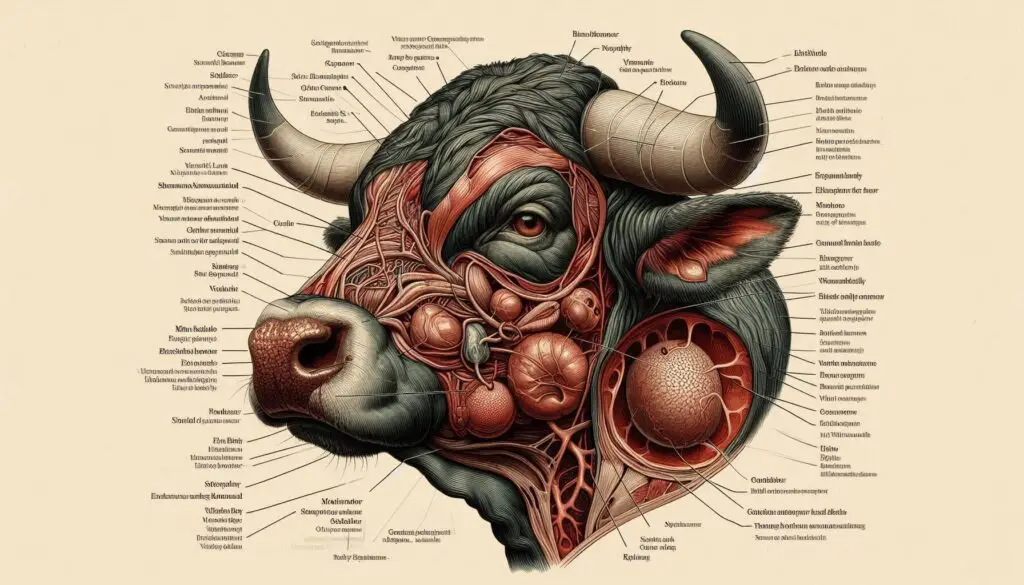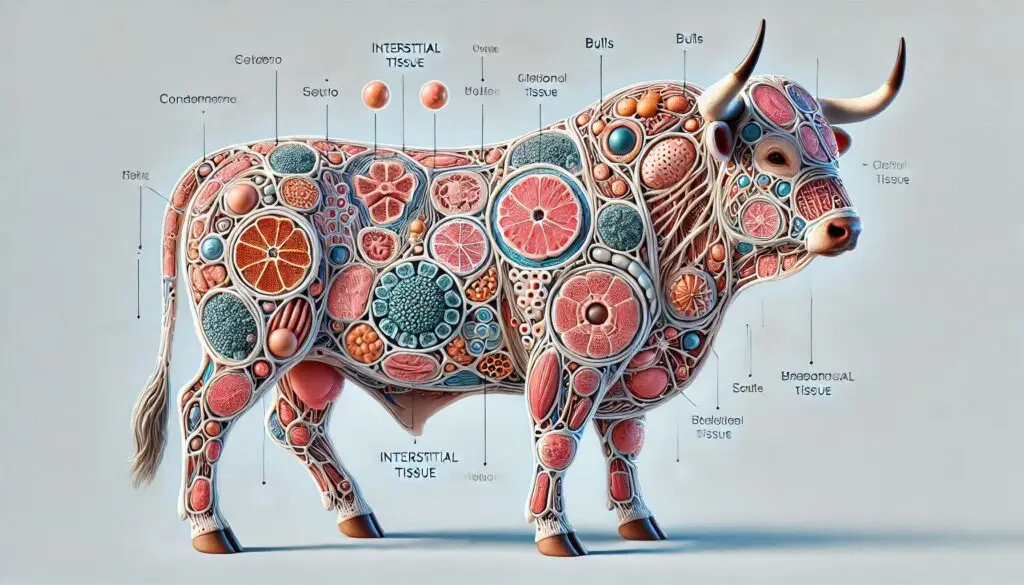Seminiferous Tubules in Bulls

Introduction
Seminiferous tubules play a vital role in the reproductive system of bulls. These structures are where sperm production occurs, making them essential for cattle breeding and overall fertility. In this article, we will explore the anatomy, function, and significance of seminiferous tubules in bulls. We will also discuss variations among different bull breeds and their impact on fertility.
What Are Seminiferous Tubules?
Seminiferous tubules are coiled structures located within the testes of male mammals, including bulls. They are responsible for spermatogenesis, the process of sperm cell development. The tubules contain various cell types, including Sertoli cells and germ cells. These cells work together to produce mature sperm. For more information on the role of seminiferous tubules, visit Beef Magazine.
Importance of Seminiferous Tubules
The health and functionality of seminiferous tubules directly affect a bull’s reproductive capabilities. Understanding their structure and function can help farmers and veterinarians improve breeding practices. For detailed insights into bull reproduction, you can refer to The Cattle Site.
Anatomy of Seminiferous Tubules
Structure Overview
Seminiferous tubules are composed of a specialized epithelium that includes:
- Sertoli Cells: These cells support and nourish developing sperm cells.
- Germ Cells: These are the precursor cells that undergo division to form sperm.
The tubules are highly coiled, which maximizes their surface area and allows for efficient spermatogenesis.
Morphometric Characteristics
Research shows that the size and structure of seminiferous tubules can vary among different bull breeds. For instance:
- Holstein Friesian (HF) bulls have an average seminiferous tubule diameter of 228.04 µm.
- Karan Fries (KF) bulls show a diameter of 183.43 µm.
- Tharparkar bulls have a smaller diameter, averaging 111.71 µm.
These differences can influence fertility rates and overall reproductive success. For more information on morphometric characteristics, see Merck Veterinary Manual.
Key Morphometric Data
- Diameter: Varies by breed.
- Length: In Gir bulls, the mean length is about 17 ± 0.8 m per gram of testicle.
Spermatogenesis Process
Stages of Spermatogenesis
Spermatogenesis occurs in several stages:
- Spermatocytogenesis: This initial phase involves mitotic divisions of spermatogonia, increasing the number of germ cells.
- Meiosis: Here, germ cells undergo two divisions to reduce their chromosome number, resulting in haploid round spermatids.
- Spermiogenesis: In this final stage, round spermatids differentiate into mature spermatozoa.
The entire cycle takes approximately 61 days, with the seminiferous epithelium cycle lasting about 13.5 days.
Factors Affecting Spermatogenesis
Several factors can impact spermatogenesis in bulls:
- Temperature: Elevated temperatures can impair sperm production.
- Nutrition: A balanced diet is crucial for optimal reproductive health.
- Stress: Environmental or social stressors can negatively affect fertility.
For further reading on nutrition’s role in bull fertility, visit Beef Cattle Nutrition.
Breed Differences in Seminiferous Tubules
Comparative Analysis Among Breeds
Research indicates significant differences in seminiferous tubule characteristics among various bull breeds:
- Holstein Friesian (HF): Known for higher Sertoli cell proportions, which may enhance fertility.
- Karan Fries (KF): Exhibits lower Sertoli cell proportions compared to HF.
- Tharparkar: Shows a more compact arrangement of spermatogenic cells.
These variations highlight the importance of breed-specific studies to improve reproductive efficiency.
Impact on Fertility
Understanding these differences can help farmers select appropriate breeds for specific environments or production goals.
Health Implications for Seminiferous Tubules
Common Disorders
Several disorders can affect seminiferous tubules and overall fertility:
- Testicular Degeneration: This condition leads to reduced sperm production.
- Infections: Such as orchitis can impair testicular function.
- Genetic Disorders: Certain genetic conditions can affect spermatogenesis.
Regular veterinary check-ups can help identify these issues early. For more information on bull health management, refer to Cattle Today.
Prevention Strategies
To maintain healthy seminiferous tubules:
- Ensure proper nutrition tailored to reproductive needs.
- Minimize stress through proper housing and management practices.
- Monitor for signs of illness regularly.
Conclusion
Seminiferous tubules are essential for bull reproduction, influencing both sperm production and overall fertility. Understanding their structure and function helps improve breeding practices and cattle management strategies. By recognizing breed differences and potential health issues, farmers can make informed decisions that enhance reproductive success.
For further reading on bull reproduction and management practices, consider visiting Beef Quality Assurance or Cattle Today.
More from Veterinary Anatomy:






Responses